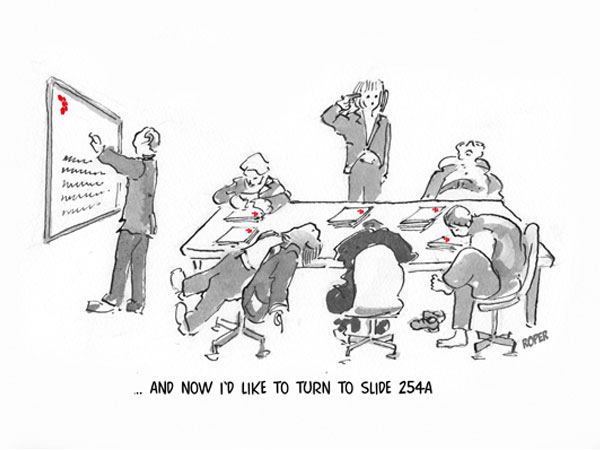Any committee that is the slightest use is composed of people who are too busy to want to sit on it for a second longer than they have to.
– Katharine Whitehorn
We’ve all been there: the meeting that drags on endlessly, achieves little, and leaves everyone wondering why they even showed up. People arrive late, check their emails mid-discussion, or duck out to take a call. Even when phones are off, minds are often elsewhere. Interruptions, side conversations, and defensive posturing replace collaboration.
All this results in frustration, damaged relationships, and – crucially – no progress. These behaviours often reflect deeper, unspoken attitudes like:
- “This meeting is pointless.”
- “I’m too busy to waste my time here.”
- “I’ll tune in when it’s something that interests me.”
- “I need to defend myself/my team/my corner.”
And let’s not forget the meetings without clear agendas, actionable outcomes, or accountability – where everyone leaves wondering, “What happens next?”
It doesn’t have to be this way.
How about a better meeting culture?
Picture this:
- Everyone arrives on time, prepared and ready to contribute.
- Phones are off and every voice is heard without interruption.
- There’s a clear agenda with objectives for every item.
- Decisions are made, actions assigned, and deadlines agreed.
- The meeting ends on time, leaving everyone with clarity and purpose.
Idealistic? Not at all – it’s entirely achievable with some deliberate planning and discipline. In fact, many organisations find that transforming their meeting culture is the starting point for wider change. Meetings often reflect a broader organisational mindset – get meetings right, and you set the tone for everything else.
Designing meetings that deliver
To run effective and efficient meetings you need to approach them with intention. Start with these strategies:
1. Set SMART objectives
Every meeting should have clear, specific goals. Avoid vague aims like “discuss the quarterly plan” and focus on outcomes:
- Approve the quarterly plan.
- Assign owners to key initiatives.
- Agree on deadlines for project milestones.
2. Invite the right people
Don’t fall into the trap of including everyone “just in case.” Only invite those who are essential to achieving the objectives. Everyone else can receive a summary.
3. Create a purposeful agenda
Draft an agenda with SMART objectives for each item, allocating realistic times. A two-hour meeting shouldn’t tackle more than three to five key points.
4. Establish ground rules
Set the tone by introducing simple, behaviour-focused ground rules. For example:
- Arrive on time and fully prepared.
- Listen without interrupting.
- Keep phones off and out of sight.
- Take accountability for actions.
Discuss these rules in an early meeting, adjust them as needed, and reinforce them regularly. Over time, they’ll become second nature.
5. Streamline meeting notes
Skip the narrative minutes. Instead, create a concise action list with three columns:
- Action.
- Accountable person.
- Deadline.
Summarise decisions into clear, measurable actions before moving on. This ensures everyone knows who’s doing what and by when.
Tips for ongoing meeting success
- Kick off with the ground rules Start each meeting by reminding participants of the ground rules and goals. This helps set the right mindset from the outset.
- Enforce time limits Stick to the allocated times for each agenda item. If something runs over, decide whether to extend the discussion or schedule a follow-up.
- Handle AOB carefully Limit “Any Other Business” to five minutes max. If an issue needs more time, schedule it for the next meeting.
- Close with a review End every meeting by summarising actions, assigning accountability, and confirming deadlines. This ensures everyone leaves with clarity.
- Use technology wisely If you track actions in a tool like Excel, include target dates. Review this list at each meeting to ensure accountability and progress.
Why it matters
Meetings aren’t a necessary evil – they’re where the most important work happens. Decisions are made, problems are solved, and strategies come to life. By designing and running meetings with care, you’ll save time and boost productivity, strengthen relationships, and create a culture of accountability.
So, what’s your next step? Take a hard look at your current meeting practices. Where are they falling short? And what changes can you make starting today?
Because when meetings are effective, everything else starts to fall into place.
